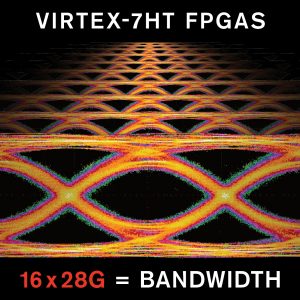Designing with Xilinx Serial Transceivers
Course Description
Learn how to employ serial transceivers in 7 series, UltraScale™, UltraScale+™ FPGA or Zynq® UltraScale+ MPSoC designs.
The focus is on:
- Identifying and using the features of the serial transceiver blocks, such as 8B/10B and 64B/66B encoding, channel bonding, clock correction, and comma detection
- Utilizing the Transceivers Wizards to instantiate transceiver primitives
- Synthesizing and implementing transceiver designs
- Taking into account board design as it relates to the transceivers
- Testing and debugging
Level
Connectivity 3
Training Duration
2 days
Audience
FPGA designers and logic designers
Prerequisites
- Verilog or VHDL experience or the Designing with Verilog or Designing with VHDL course
- Familiarity with logic design (state machines and synchronous design)
- Basic knowledge of FPGA architecture and Xilinx implementation tools is helpful
- Familiarity with serial I/O basics and high-speed serial I/O standards is also helpful
Software Tools
- Vivado® System Edition 2016.3
- Mentor Graphics QuestaSim simulator 10.4
Hardware
- Architecture: 7 series and UltraScale FPGAs
- Demo board: Kintex-7 FPGA KC705 board
Skills Gained
This course focuses on the UltraScaleand 7 series architectures. Check with your local Authorized Training Provider for the specifics of the in-class lab board or other customizations.After completing this comprehensive training, you will have the necessary skills to:
- Describe and utilize the ports and attributes of the serial transceiver in 7 series FPGAs
- Effectively utilize the following features of the gigabit transceivers:
- 64B/66B and other encoding/decoding, comma detection, clock correction, and channel bonding
- Pre-emphasis and linear equalization
- Use the UltraScale FPGAs Transceivers Wizard to instantiate GT primitives in a design
- Access appropriate reference material for board design issues involving the power supply, reference clocking, and trace design
- Use the IBERT design to verify transceiver links on real hardware
Course Outline
Day 1
- 7 Series, UltraScale, UltraScale+, Zynq UltraScale+ Transceivers Overview
- 7 Series, UltraScale, UltraScale+, Zynq UltraScale+ Transceivers Clocking and Resets
- Transceiver IP Generation –Transceiver Wizard
- Lab 1: Transceiver Core Generation
- Transceiver Simulation
- Lab 2: Transceiver Simulation
- PCS Layer General Functionality
- PCS Layer Encoding
- Lab 3: 64B/66B Encoding
Day 2
- Transceiver Implementation
- Lab 4: Transceiver Implementation
- PMA Layer Details
- PMA Layer Optimization
- Lab 5: IBERT Design
- Transceiver Test and Debugging
- Lab 6: Transceiver Debugging
- Transceiver Board Design Considerations
- Transceiver Application Example
Lab Descriptions
- Lab 1:Transceiver Core Generation –Use the Transceivers Wizard to create instantiation templates.
- Lab 2: Transceiver Simulation –Simulate the transceiver IP by using the IP example design.
- Lab 3: 64B/66B Encoding –Generate a 64B/66Btransceiver core by using the Transceivers Wizard, simulate the design, and analyze the results.
- Lab 4: Transceiver Implementation –Implement the transceiver IP by using the IP example design.
- Lab 5: IBERT Design –Verify transceiver links on real hardware.
- Lab 6: Transceiver Debugging –Debug transceiver links.

Datum
17 maart 2020 - 18 maart 2020
Locatie
Core|Vision
Cereslaan 24
5384 VT
Heesch
Prijs
€ 0,00
of
18 Xilinx Training Credits
Informatie
Training brochure
Registratieformulier
Registratie op aanvraag, neem contact op met ons.

